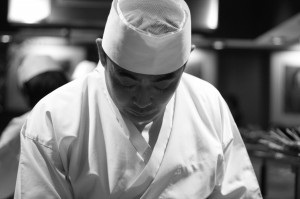Tori Shin
There are few places in New York City where you legitimately feel like you could be sitting in Tokyo. Most places are either too big or too small or the proportions of the space are just off in some subtle way. Perhaps there's a Latino bus boy or English signage. There's almost always something that gives away that we're in the U.S. At Tori Shin you have to look very, very closely and the evidence only appeared in early 2012.

